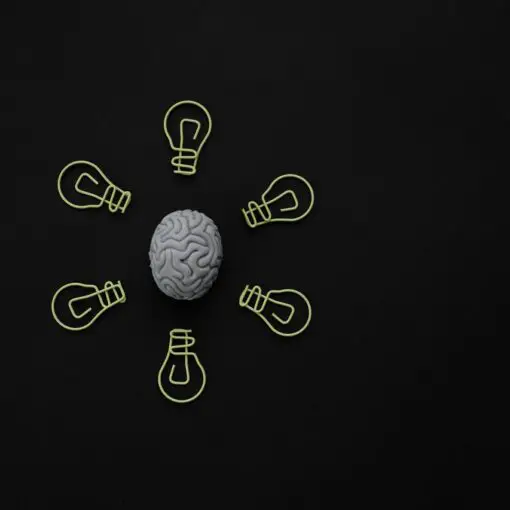Both critical thinking and creative thinking are used for solving problems, only in different ways. For critical thinking, the process is structured and methodical. For creative thinking, the process is fluid and somewhat experimental. Both thinking strategies are useful, with neither being innately superior to the other and in some unexpected ways even being linked. Now without further ado, let us explore the various components of critical thinking and creative thinking.
The Intersection of Critical Thinking & Creative Thinking
Critical thinking:
Critical thinking as we understand it can be traced all the way back to Ancient Greece in the thoughts of Socrates as recorded by Plato. Critical thinking can be summarized as the careful analysis of facts in order to form judgments. With critical, being derived from the word critic, to think critically is to critique the process of thinking itself. In layman’s terms, this means to develop an efficient and ordered system of both written and oral discourse. There are different subsets of critical thinking, which broadly speaking are; unbiased, skeptical, and rational. Let’s break down these different sections individually.
The unbiased system attempts to remove all possible biases from thinking. Everybody has some form of bias or another. Perhaps a personal bias that one has towards someone or something. Or be it a more ethnocentric bias that prevents an individual from being able to see past the beliefs instilled in them by their culture. The unbiased analysis aims to view things from an objective instead of a subjective stand-point.
The skeptical system is one that encourages both doubt and constant questioning. That includes careful examination of both longstanding beliefs and dogmas. As far as skeptics are concerned nothing is beyond the realms of inquisition. If evidence is not available to support beliefs, then they should not be accepted.
The rationality system is based on obtaining rationality, which can be defined as one being agreeable to reason. What is reason? In philosophical terms, reason is the ability to make sense of the world around us through the application of logic. Logic is a key tenet of the three systems and the cornerstone of critical thinking.
Logic is the systematic study of premises and the arguments that they form and is judged based on their validity (whether the statements make sense and lead to the conclusion) and their truth value (whether or not statements are true or false). There are three primary types of logical reasoning; deductive, inductive, and abductive. Deductive reasoning leads to certain conclusions, inductive reasoning leads to probable conclusions, and abductive reasoning is a quick and practical approach to logic.
When examining deductive arguments, we begin by not looking at the truth value of the premises, but if they lead to the conclusion in a coherent manner. If they do not then the argument is deemed invalid and unsound. If the argument is deemed valid we then examine the truth value of the premises. If true, then the argument is sound, if they are not true then the argument is still valid but unsound.
For inductive arguments, a very similar approach is taken to deductive arguments. First, we begin by examining the validity of the premises. If they are invalid the argument is weak and by extension uncogent. If the premises are valid, the argument is strong and we then examine their truth value. If false then the argument while strong is uncogent, if true however the argument is both strong and cogent.
Abductive arguments are drawn from the heuristic technique. The heuristic technique entails non-optimal problem-solving solutions, but are none the less sufficient for immediate decisions and approximations. Abductive reasoning includes such tactics as making an educated guess, following the general rule of thumb, or simple trial and error.
Creative thinking:
Creativity itself is the process where something truly new, but also valuable is formed. Be it a new idea, invention, or piece of art. Unlike logical thinking, there is no stringent set of rules or guidelines for how to undergo creative thinking. The process itself isn’t even entirely understood and there is much speculation and theorizing as to how creative thinking works, with no theory currently set in stone. This makes it a little more challenging to explain how to become a creative thinker. In attempting to do so we will go over some general principles of creative thinking and theories that may explain it.
One of the most obvious traits of creative thinkers is that they are open-minded individuals. Basically, they are willing to at least consider new ideas that other people would either never have thought of or would outright refuse due to a close-minded nature. Being open-minded doesn’t mean automatically accepting every new idea that comes your way. It just means having the willingness to unbiasedly look at things from a new perspective.
In a sense being open-minded can be viewed as somewhat pragmatic as it allows people to examine, chose, and combine different aspects of various ideas to make something both new and useful. Creative thinking also enhances communications as through being open to new experiences a person is better able to talk and work with those with different beliefs than oneself.
Creative thinking has been hypothesized by some scientists as being a part of the evolutionary process. Some scientists think that by thinking of things in abstract terms we were better able to come up with new and innovative solutions in changing environments. Various scientists and academics have attempted to map out the process of creative thinking, one popular theory being largely developed by the psychologist J.P Guilford. Guilford helped develop the theory of divergent thinking.
Divergent thinking is the process some think is responsible for producing creativity and this is done by examining many possible solutions. Divergent thinking is more spontaneous and doesn’t occur in a linear manner. With divergent thinking a great many possible activities are explored over a short period of time, often with unexpected yet original connections being made. Common activities to help engage in divergent thinking are to create a list of questions, taking the time to think and meditate on ideas, artistic endeavors such as writing and drawing are also encouraged.





